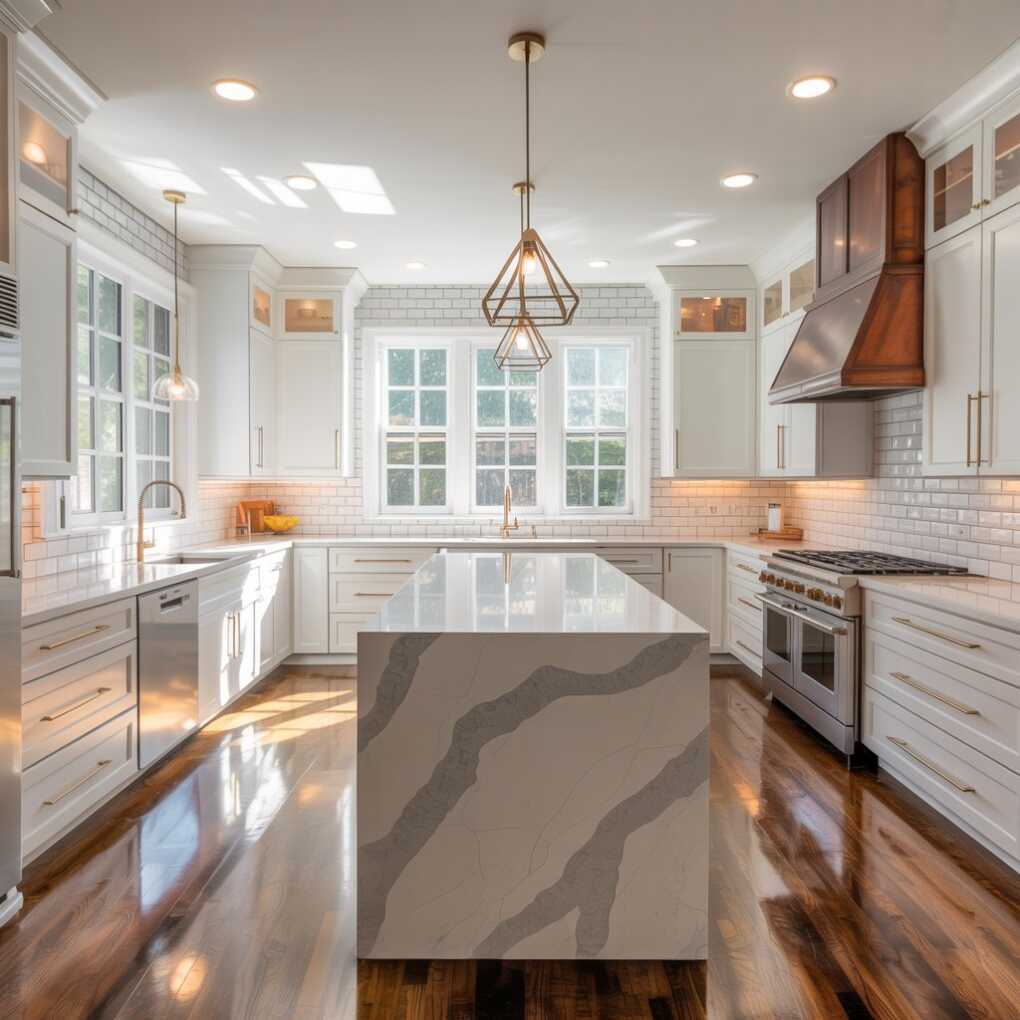A kitchen renovation sounds exciting at first — until you realize how many decisions are involved. Layout, cabinets, flooring, appliances, lighting, budget… it’s a lot to consider, and most homeowners admit the hardest part isn’t the remodel itself, but figuring out where to begin. The kitchen is the heart of the home, so every choice feels like it really matters.
In places where home upgrades are rising in popularity, like Oakville and other growing Canadian suburbs, more families are choosing to modernize their space rather than move. But even then, many struggle with that first step because they don’t have a clear system to guide their decisions.
The good news is that kitchen renovation becomes much less overwhelming when it’s broken down into simple, clear starting points. So let’s walk through them step by step.

Start By Clarifying How You Want Your Kitchen to Function
Before looking at colors or materials, it helps to focus on real life — how you use the kitchen every day. Do you want more space to cook? Better storage? A breakfast island where kids can sit? A layout that supports entertaining guests? Function always guides design.
Thinking about your pain points makes the path forward clearer. For example, if clutter builds up fast, you may need more closed storage. If cooking is your stress relief, maybe the priority is adding counter space and better appliances. When functionality becomes the anchor, later decisions become easier and more enjoyable.
Once your goals are clear, then style and materials will make more sense instead of feeling like random choices.
Get Professional Guidance Early — It Saves Time and Money
Many homeowners think the layout decisions, plumbing plans, and material combinations can wait until later, but those steps actually shape everything else. Getting expert input early creates a roadmap and prevents costly trial-and-error.
This is usually the stage where homeowners start looking for Kitchen Renovation services in Oakville because talking to a professional helps them understand what is structurally possible, what aligns with their budget, and how different design choices impact long-term durability. Trusted providers like Envyland Kitchen, focus on helping homeowners plan smart renovations that match their lifestyle instead of simply selling an aesthetic.
Working with an expert doesn’t take away your control — it gives clarity. They can help determine the best layout, recommend materials that hold up to daily life, and point out upgrades that add value rather than unnecessary expense. This kind of direction early in the process can prevent regret later.
Break Decisions Into Small, Manageable Categories
When renovations feel overwhelming, it’s usually because everything is being decided at once. Dividing decisions into phases helps you stay organized and confident. A helpful order many homeowners follow is:
● Layout and structural changes
● Cabinets and storage
● Countertops and flooring
● Lighting and hardware
● Decor and personalization
Focusing on one category at a time lets you compare options calmly rather than rushing. For example, once the layout is finalized, you’ll know exactly how many cabinets you need, which saves time and makes budgeting easier. Every step builds on the last.
Another benefit of this phased approach is that it helps keep spending under control. You can see where to invest more — like durable countertops — and where you can comfortably save, such as decorative elements that are easy to change later.
Expect the Unexpected and Build Flexibility Into the Plan
Even with great planning, renovations don’t always go exactly as expected. Sometimes electrical systems need upgrading, shipping delays happen, or flooring availability changes. The stressful part isn’t the problem — it’s feeling unprepared for it.
Renovations run smoothly when there’s room for flexibility in both budget and mindset. Many homeowners set a small contingency fund, so surprises don’t stop progress. And when there’s already a plan in place for layout and materials, any adjustments become simpler and less emotional.
Knowing how to adapt quickly helps keep motivation strong instead of letting delays ruin the experience.
Make the Final Touches Count — They Shape the Feeling of the Kitchen
Even the most functional layout can feel unfinished without thoughtful finishing touches. Lighting that makes cooking easier, hardware that feels nice to the touch, paint tones that match the natural light — these details change how the space feels day to day.
Small choices make a surprisingly big difference. Warm under-cabinet lights can make evenings feel cozy. A comfortable bar-stool setup can bring family members together during meal prep. A simple backsplash can highlight the whole kitchen and tie the style together.
These finishing touches are where personality finally shines through, making the renovated space feel like home rather than just a remodel.
Conclusion
Renovating a kitchen can seem intimidating when you don’t know where to begin, but it becomes much more manageable when approached step by step. Focusing first on functionality creates clarity, getting professional guidance early prevents expensive mistakes, and breaking decisions into phases removes the pressure to figure everything out at once.
With flexibility in planning and attention to thoughtful finishing details, the process turns from overwhelming into exciting. A renovated kitchen isn’t just a new room — it’s a space built around daily life, memories, comfort, and the people who gather there.
